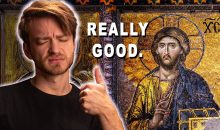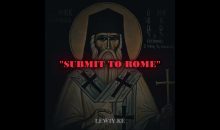Meet the Orthodox Clergy: Profiles of Priests, Bishops, and Monastics
Meet the Orthodox Clergy: Profiles of Priests, Bishops, and Monastics
The Orthodox Christian Church is a rich and vibrant community of faithful believers, with a long history of spiritual leadership and guidance. At the heart of this community are the clergy, who have dedicated their lives to serving God and His people. In this article, we will introduce you to some of the key figures in the Orthodox clergy, including priests, bishops, and monastics, and explore their roles, responsibilities, and spiritual journeys.
Priests: The Pastors of the Flock
Orthodox priests are the spiritual leaders of local parishes, responsible for guiding their congregations in worship, teaching, and community service. They are ordained to serve as proxies for Christ, administering the sacraments, preaching the Gospel, and providing pastoral care to their flock. Priests are typically married with families, and many have secular careers before entering the priesthood.
One example of an Orthodox priest is Father John, a married priest with two children, who serves a parish in the United States. Father John has a background in education and psychology, and brings a wealth of experience to his ministry. He is known for his warm and compassionate approach to pastoral care, and his ability to communicate complex spiritual concepts in a clear and accessible way.
Bishops: The Spiritual Leaders of the Church
Orthodox bishops are the chief shepherds of the Church, responsible for overseeing the spiritual well-being of their dioceses. They are responsible for ordaining priests, consecrating churches, and guiding the overall direction of the Church. Bishops are typically monastics, having taken vows of celibacy and dedicating their lives to prayer, study, and service.
His Eminence Archbishop Demetrios, the former Archbishop of America, is an example of an Orthodox bishop. Archbishop Demetrios is a renowned theologian and scholar, with a deep understanding of the Orthodox tradition. He has written extensively on topics such as spirituality, ecumenism, and social justice, and has been a vocal advocate for the rights of the marginalized and oppressed.
Monastics: The Desert Dwellers of the Modern Age
Orthodox monastics are men and women who have dedicated their lives to prayer, contemplation, and service. They live in monasteries, following a strict regimen of prayer, work, and study. Monastics are responsible for maintaining the spiritual traditions of the Church, and for providing a witness to the world of the transformative power of prayer and asceticism.
One example of an Orthodox monastic is Mother Theodota, the abbess of a women’s monastery in Greece. Mother Theodota is a wise and compassionate spiritual guide, known for her deep understanding of the human heart and her ability to offer counsel and comfort to those seeking guidance. She has written extensively on topics such as spirituality, prayer, and the role of women in the Church.
The Spiritual Journey of the Orthodox Clergy
The Orthodox clergy are not simply spiritual leaders, but are themselves on a journey of spiritual growth and transformation. They are called to embody the virtues of Christ, and to model a life of holiness and humility. The spiritual journey of the Orthodox clergy is marked by a deep commitment to prayer, study, and service, and a willingness to surrender to the will of God.
As Father Sophrony, a renowned Orthodox priest and spiritual guide, once wrote, “The priest is not just a functionary, but a man who has been transformed by the grace of God.” This transformation is the result of a lifelong process of spiritual struggle, marked by periods of joy and sorrow, triumph and defeat. It is a journey that requires great courage, humility, and perseverance, but one that ultimately leads to a deep sense of peace, joy, and fulfillment.
Conclusion
The Orthodox clergy are a remarkable group of men and women, dedicated to serving God and His people. They are the spiritual leaders of the Church, guiding their congregations in worship, teaching, and community service. Through their examples of humility, compassion, and spiritual wisdom, they inspire and nurture the faithful, and provide a witness to the world of the transformative power of Orthodox Christianity. As we meet the Orthodox clergy, we are reminded of the importance of living a life of faith, hope, and love, and of the enduring power of the Gospel to transform and redeem us.

